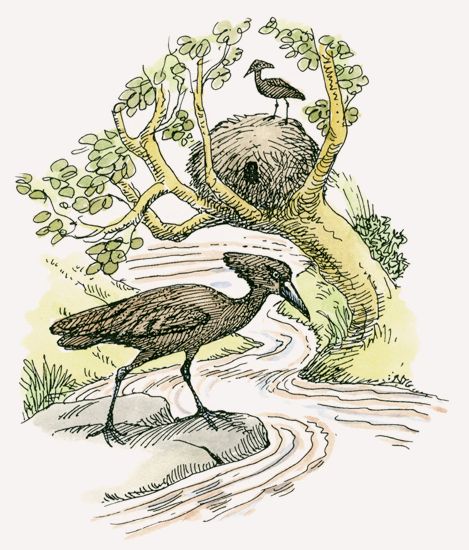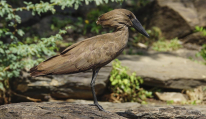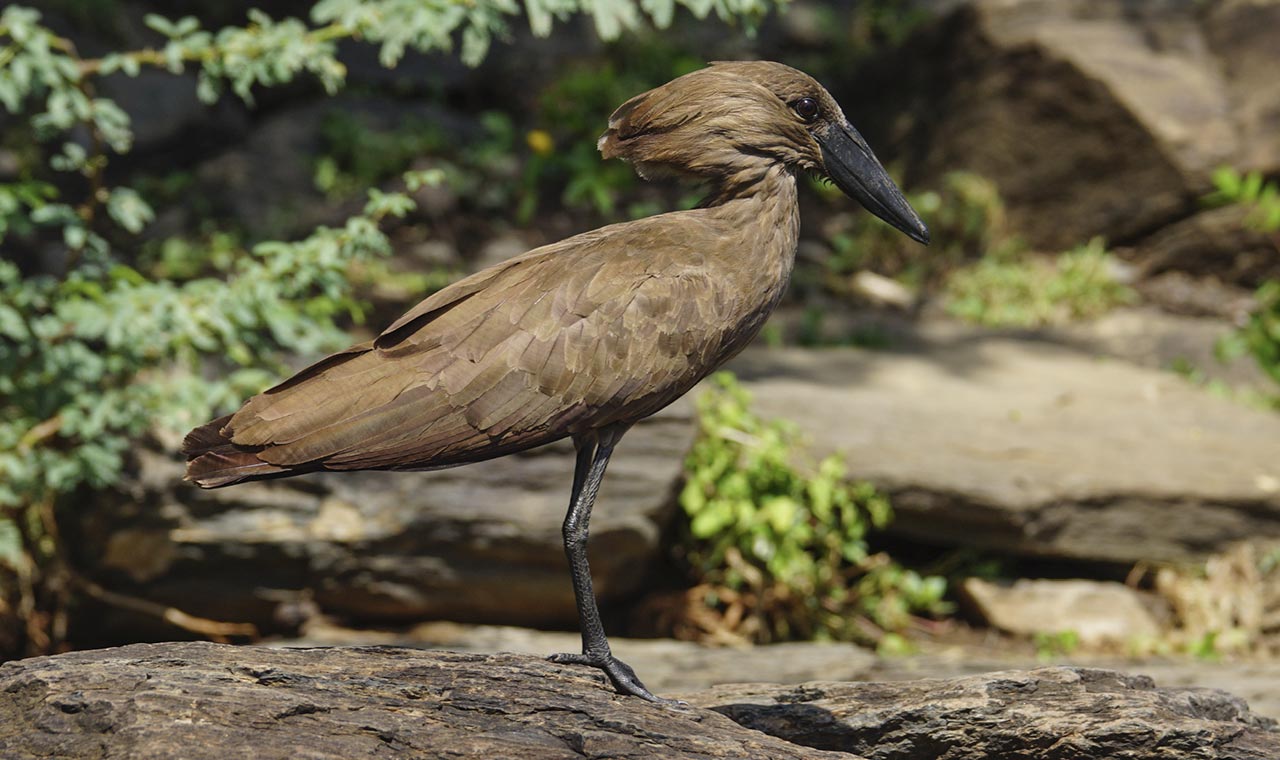Social Structure
Hammerkops live in pairs but also gather in groups. As many as ten hammerkops may join in a ceremony where they run around in circles and call loudly. Males raise their crests and flutter their wings. They may also mimic mating. Real mating occurs near the nest.
Communication
Hammerkops trill and yip, sometimes in chorus. In flight, they may produce a long-distance kyip.
Behavior
Hammerkops are wading birds with partially webbed feet. They usually feed alone or in pairs during the morning in shallow water sources and roost in trees at midday.
Conservation
The overall population trend is stable or increasing. The International Union for Conservation of Nature (IUCN) ranks them as lower risk.
Diet
Hammerkops eat frogs, fish, invertebrates, and crustaceans found in shallow water.
Breeding
A pair builds several nests during the year, usually in the fork of a tree near water. Each takes about six weeks to construct, and some are never used. Three to seven eggs are laid and incubated for about a month by both parents. The young may begin flying in about seven weeks, returning to the nest at night.
Friends & Foes
Sometimes squatters, such as kestrels, owls, Verreaux’s eagles, or Egyptian geese, take over abandoned hammerkop nests. Sometimes they even take up residence while hammerkops still call the nest home.
Population in Kenya
Hammerkops are found throughout Kenya, including around villages.
Range & Habitat
Hammerkops inhabit southern and central Africa, Madagascar lowlands, and the southern Arabian Peninsula. They live around shallow, freshwater lakes, ponds, and marshes. Irrigated lands, such as rice paddies, also attract hammerkops.





